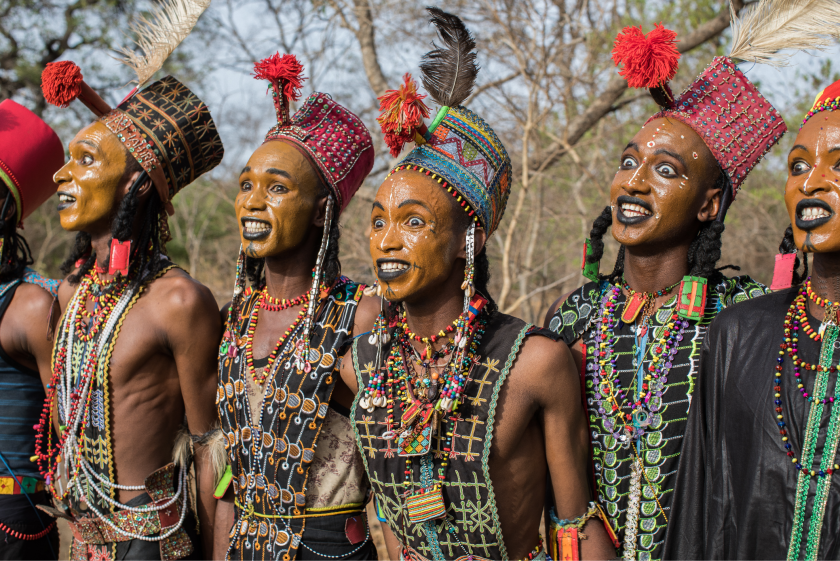Season 3 Episode 15
The Republic of Chad has an unevenly distributed population due to factors such as varying physical geography and climate.
There are over a hundred ethnic groups in Chad where the Sara is the largest ethnic group, seconded by the Arabs who introduced Islam into the State.
Let’s look into the major ethnic groups that can be found in the Republic of Chad.
- Sara
- Arab
- Daza
- Mayo-Kebbi and Kanem-Bornu
SARA
The Sara ethnic group is the largest tribal group in the Republic of Chad with about 28% of the total population of the country. The Sara people migrated and settled in Chad from the Nile River when they had been traded by the Arab slave traders.
The Sara tribe are non-muslims found in the southern region of Chad having sub-tribes including The Sara tribe are non-muslims found in the southern region of Chad having sub-tribes including Sar, Kaba, Mbaye, Gulay among others. The Sara people speak a language called Mbay, considered as a Nilo-Saharan language.
The major activities done by the Sara tribe is agriculture where they practice farming and examples of products include cassava, cotton, millet.
ARAB
The Arabs make up about 12% of the total population of Chad making them the second largest ethnic group in Chad. They are muslims occupying the central part of Chad and are divided into 3 sub-groups namely the Hassuna, the Juhayna and the Awlad Sulayman.
The native language of the Arab tribe is Chadian Arab which is one of the lingua franca spoken in the country after French.
DAZA
The Daza ethnic group of Chad make up about 11% of the total population in the Republic of Chad. The Daza tribe can be found towards the brinks of the southern side of the Sahara Desert.
The native language of the Daza tribe is the Daza or Dazaga language which is a Nilo-Saharan language.The Daza ethnic group are known for their mastery skills in fighting.
MAYO-KEBBI AND KANEM-BORNU
The Mayo-Kebbi tribe make up about 11% of the total population of Chad while Kanem-Bornu makes up about 9%. These two groups inhabit areas close to the Sara tribe at the southwestern part of the country.
The Mayo-Kebbi derived their name from a river-valley that they occupy while the Kanem-Bornu live near Lake Chad. The Mayo-Kebbi tribe practice indigenous beliefs while the Kanem-Bornu people are mixed between Muslims and indigenous beliefs.
Written and edited by Ebenezer Oladokun


2 comments